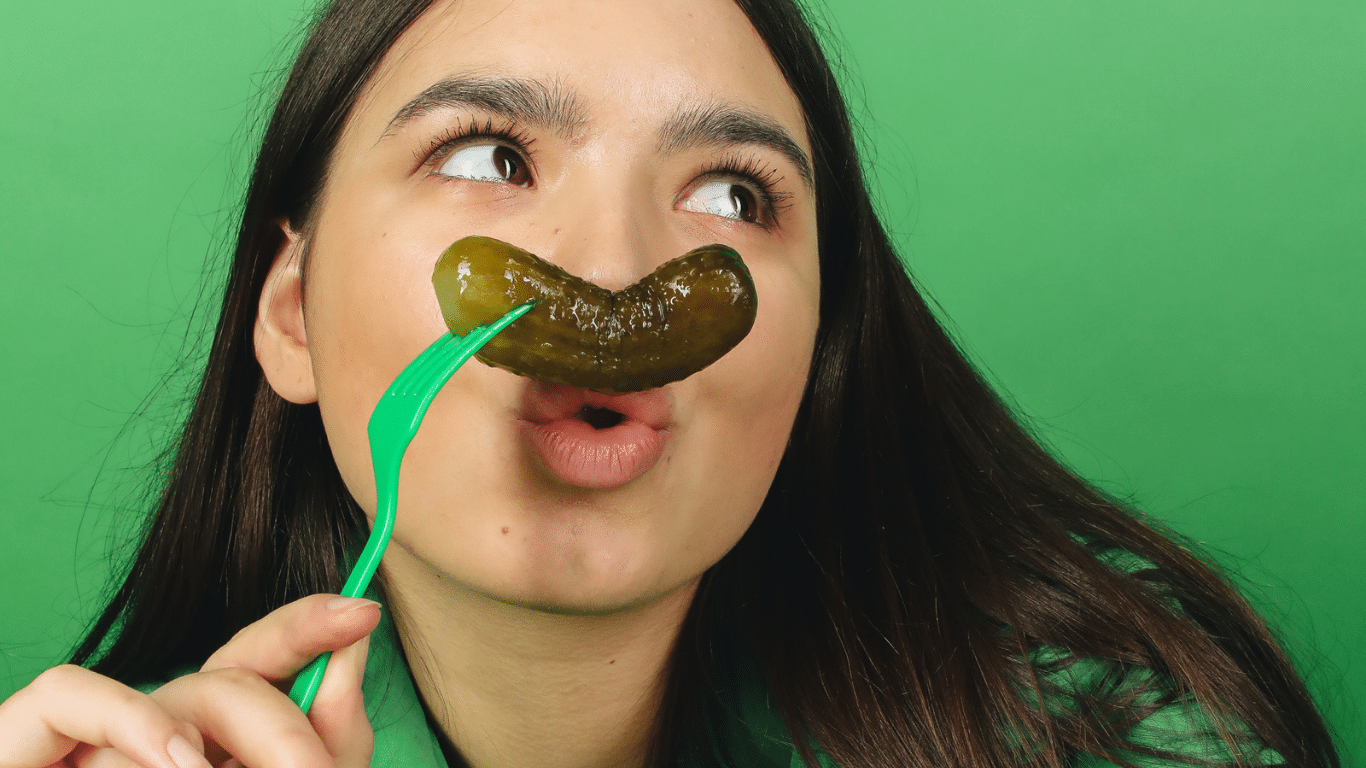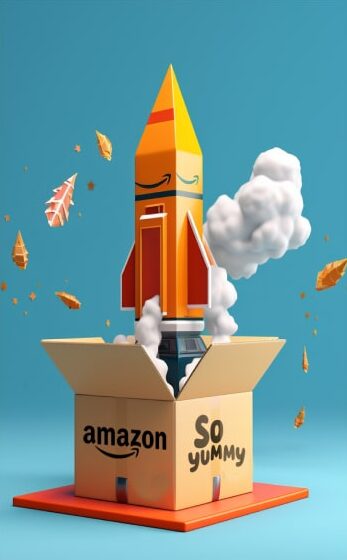
There’s something a little unexpected taking over snacks, sauces, and even drinks lately: pickles. Or more specifically, that bold, briny, sour flavor that hits just the right kind of weird. From TikTok recipes to pickle-flavored chips and even pickle martinis, it seems like sour is having a serious moment. But this isn’t just a quirky phase. There’s a surprising history and some cultural shifts behind it, and depending on who you ask, we’re either totally here for it or completely over it.
A Quick Bite of Pickle History in America
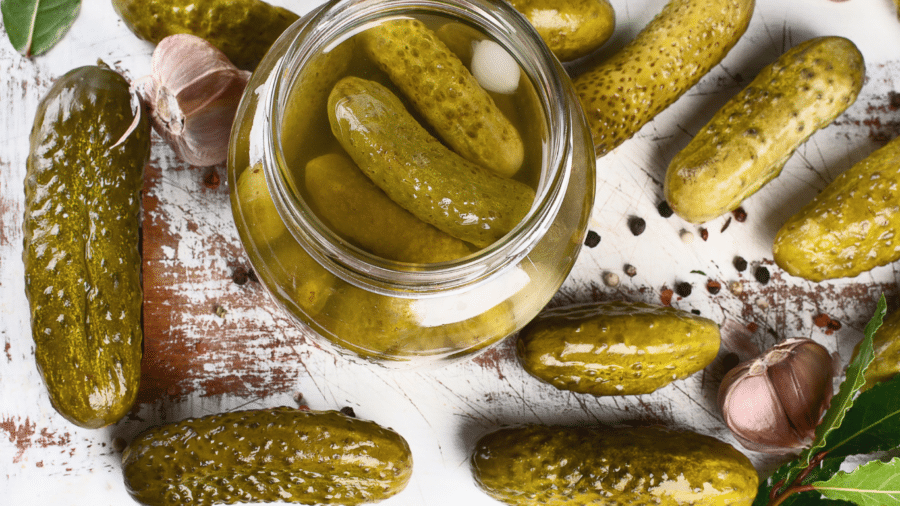
Pickles have been part of American cuisine for centuries. European settlers brought pickling methods with them, but cucumbers preserved in brine were already beloved by Indigenous peoples long before that. By the 1900s, pickles became a staple, thanks to immigrant communities and the rise of industrial food production. Today’s obsession might seem sudden, but pickles have always quietly been on the plate, often right next to the sandwich.
Pickles: A Love-It-or-Leave-It Food
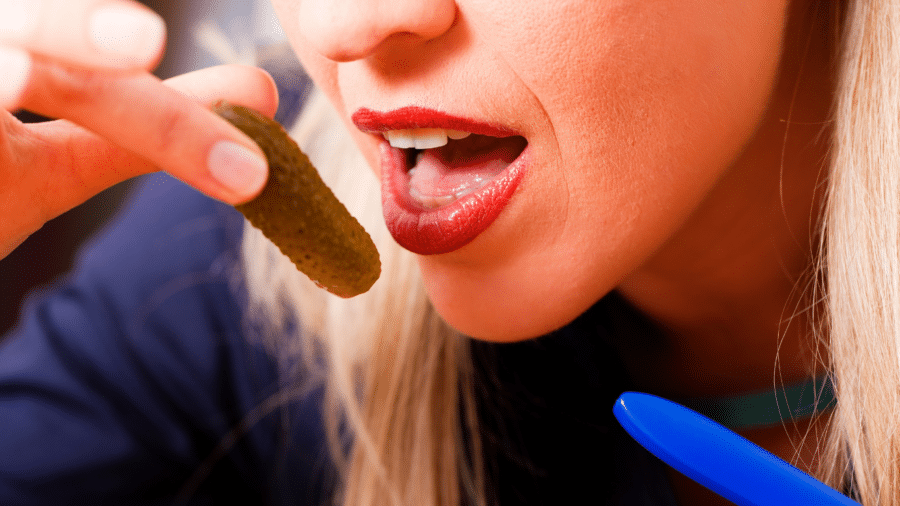
There’s no in-between when it comes to pickles. People either snack on them straight from the jar or ask for “no pickles, please” at every burger joint. That strong divide is part of what makes them such a hot topic online. The flavor is bold, unapologetic, and kind of nostalgic, which makes it perfect for a generation obsessed with punchy, opinion-sparking food trends.
The Rise of Pickle People (And Their Online Empire)
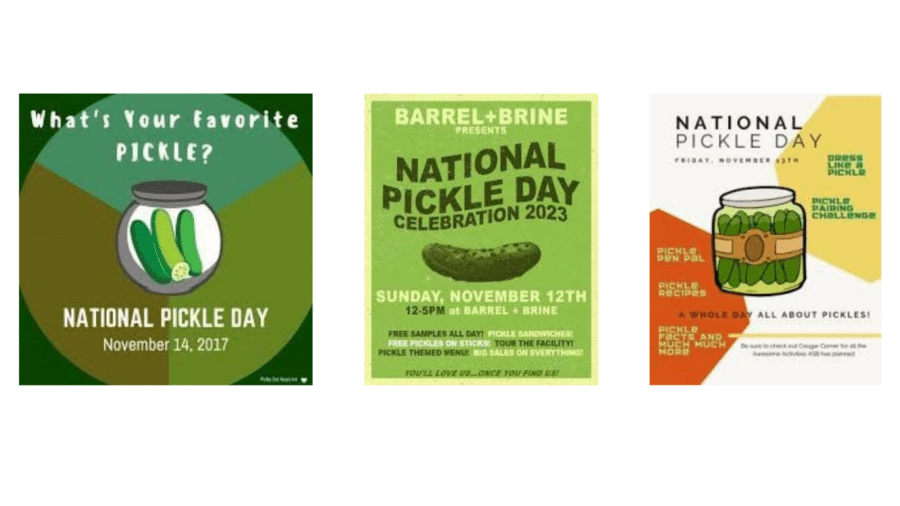
Pickle fans aren’t just eating pickles; they’re building an identity around them. Social media is full of “pickle girls,” DIY pickling recipes, and taste tests for all things briny. There’s even a National Pickle Day (November 14) that seems to grow in popularity each year. What was once a humble pantry item has become a full-on lifestyle for some. And yes, there are pickle influencers now.
Picklesburgh: A Festival for the Brine-Obsessed
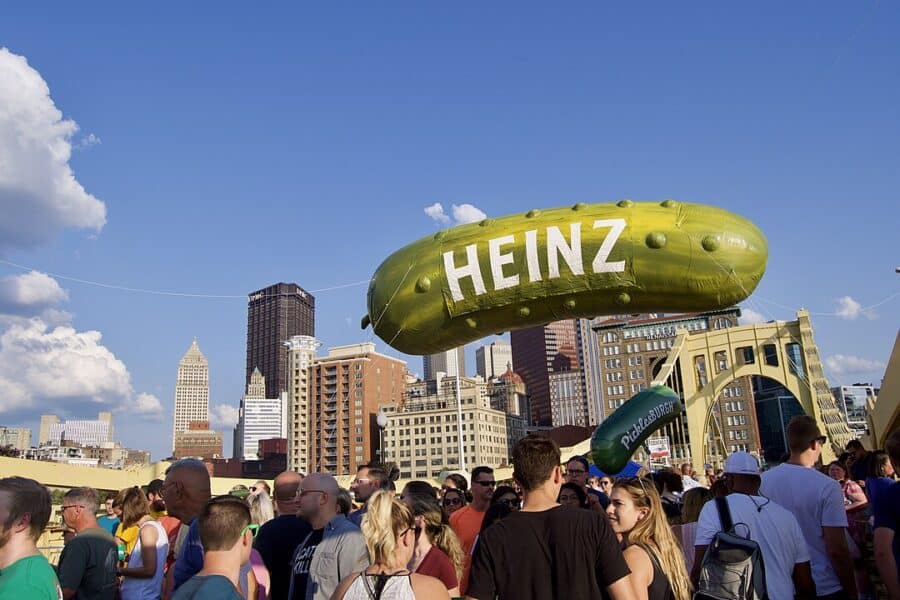
If there’s ever been proof that we’re living in a full-blown pickle era, it’s Picklesburgh. This annual festival in Pittsburgh, Pennsylvania, celebrates all things pickled, from classic dill spears to pickle ice cream, pickle beer, and kimchi. First launched in 2015, Picklesburgh has grown into a major summer event that draws huge crowds for its quirky, briny offerings. It’s even been named the “Best Specialty Food Festival in America” multiple times in USA Today readers’ polls, including 2019, 2020, 2023, and again in 2025. This year’s 9th annual event is set for July 11–13, and it promises more pickled delights, live music, and even a giant flying pickle balloon over the city’s bridges.
Pickle-Flavored Things and Thing-Flavored Pickles
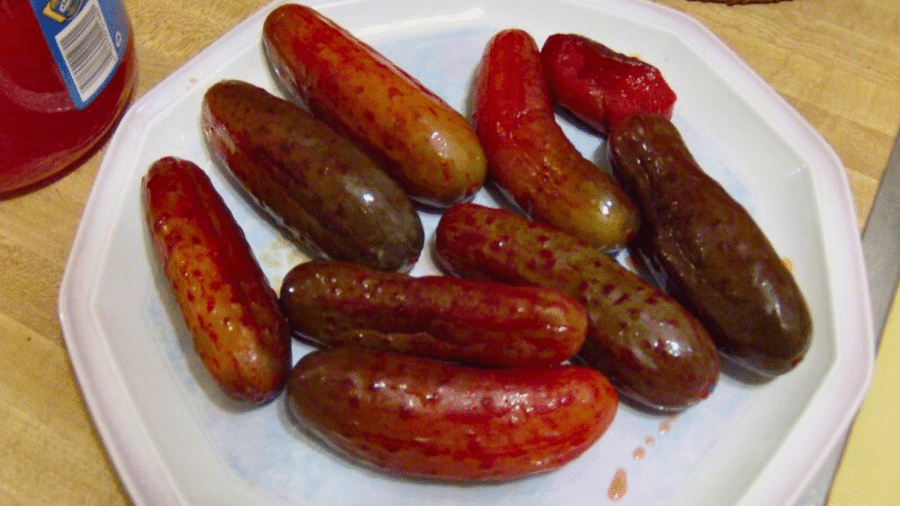
Source: Flickr
This trend has gone beyond the pickle jar. We’re talking pickle-flavored chips, popcorn, dips, ice cream, beer, cotton candy, and on the flip side, pickles infused with flavors like hot Cheetos, Kool-Aid, or ranch. It’s the kind of food mashup culture that could only thrive in the internet age. Not all of it is delicious, but it sure gets people talking (and posting).
Blame It on the Algorithm: Pickles on Social Media

Platforms like TikTok and YouTube have helped the pickle craze explode. There are viral recipes like pickle tacos, pickle pizza, and fried pickle dip that rack up millions of views. Challenge videos featuring outrageous pickle combinations (think peanut butter and pickles) keep fueling the hype. The visual appeal and shock factor are undeniably made for scrolling.
When Pickles Go Mainstream
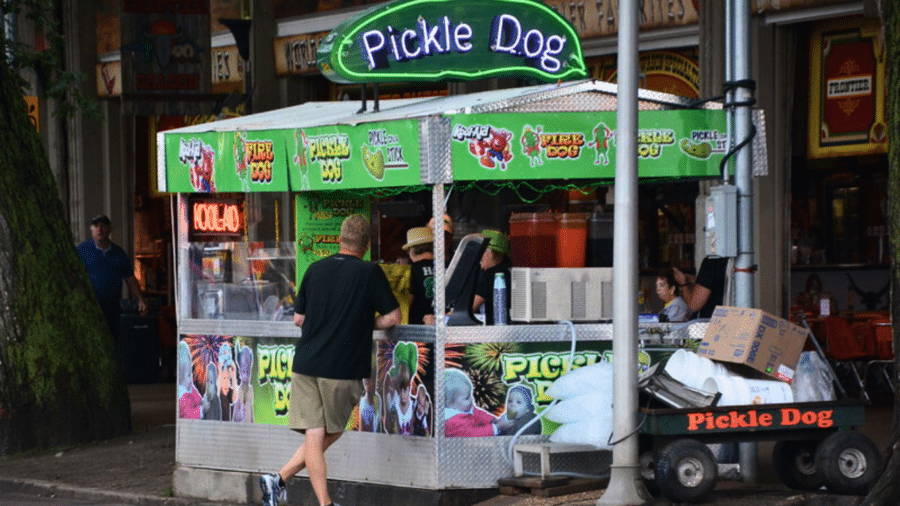
Once a trend hits restaurant menus and product lines, you know it’s gone big. Brands now release limited-edition pickle products. Restaurants offer pickle flights, pickle-based cocktails, and even entire pickle-themed nights. There’s pickle-flavored soda and even pickle-scented merch like candles and lip balm. It’s quirky, yes, but evidently marketable.
The Sour Side of Health Trends
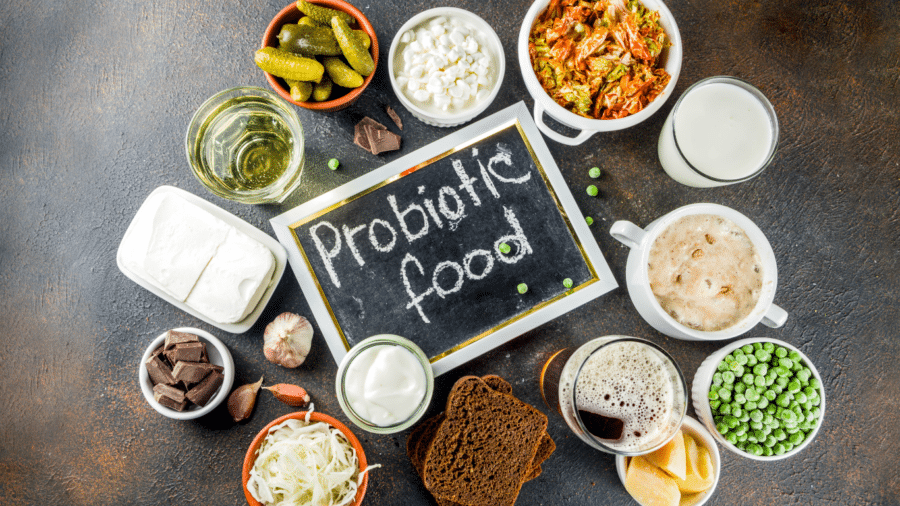
Part of the appeal comes from the real benefits of fermented foods. Naturally fermented pickles contain probiotics that can help with gut health, digestion, and even immunity. But there’s a catch: most mass-produced pickles (and especially pickle-flavored snacks) don’t offer the same benefits. The vinegar-based or artificially flavored stuff might taste fun, but it’s not the same as the fermented, probiotic-rich kind.
Pickle Craze: Harmless Fun or Too Much of a Good Thing?
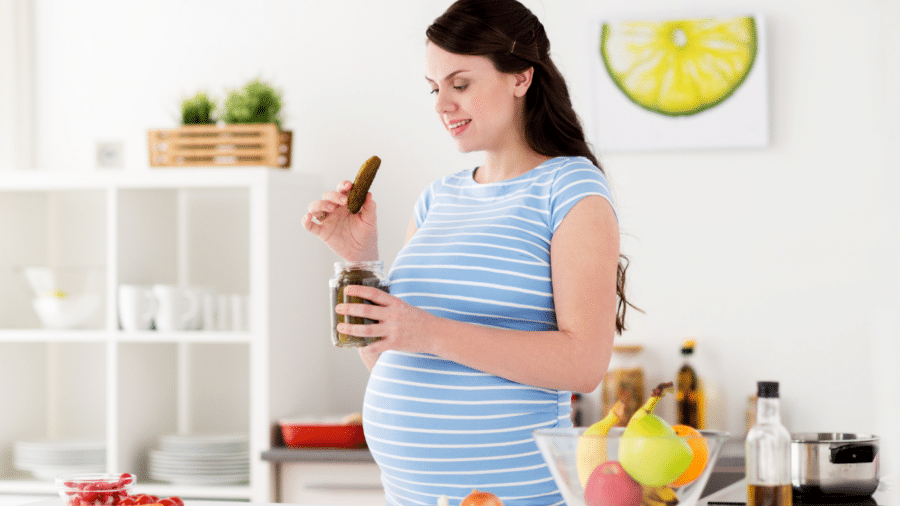
Food trends always walk a fine line between fun and overkill. For some, the pickle obsession brings joy and creativity into the kitchen. For others, it’s gone too far into gimmick territory. While there’s nothing wrong with a trend rooted in strong flavor and food history, it’s worth keeping a critical eye on what’s genuinely good and what’s just clickbait in a jar.
Where Do We Go From Here?
It’s hard to say if the pickle era will fizzle out or keep evolving. Like many food trends, it might fade from the spotlight but remain a staple. But one thing’s clear: we’ve entered a moment where sour and salty are getting their turn in the limelight, and the internet isn’t done playing with it. Whether you’re in your pickle era or just passing through, the brine craze has already left its mark.
This Is Your Brain on Brine
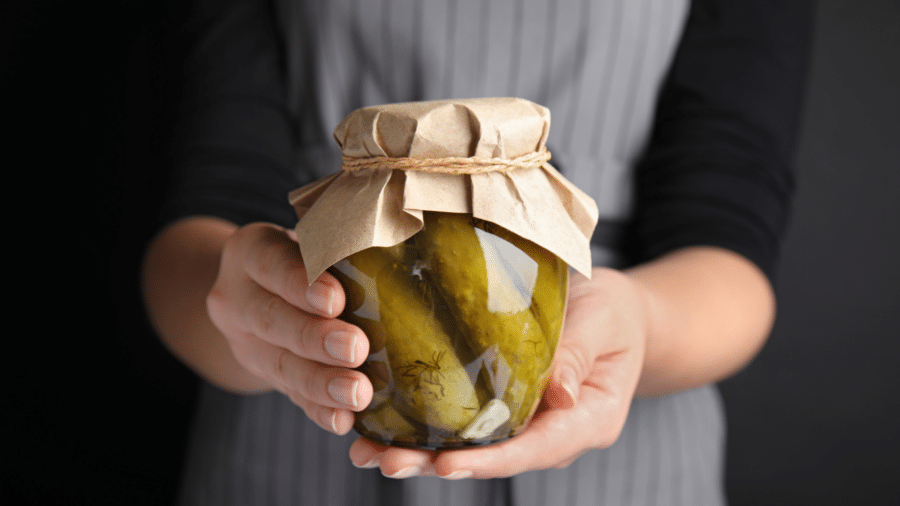
From all the evidence presented, pickles are now more than just a snack. They’re a cultural moment. What started as a pantry staple has grown into a full-blown trend powered by social media, nostalgia, and bold flavor cravings. And like any trend, it’s more than what’s on the plate. It’s about identity, experimentation, and the joy of sharing something just a little bit weird. Love it or hate it, you’re part of the briny wave.
